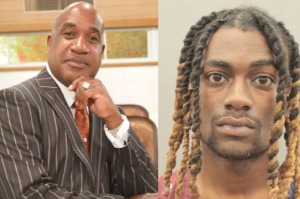The Case of the Pro-Life Movement: On Demography and Marriage

The future of marriage in the United States may look grim, but so did the pro-life cause look forty years ago. Embattled social conservatives should find hope in the demographic shifts that trailed the legalization of abortion.
Social liberals have gotten their way. The Supreme Court has imposed a socially liberal policy preference on the entire country by way of a single, sweeping decision. Sober-minded political analysts—even within the conservative movement—remain pessimistic about social conservatism's long-term prospects. Indeed, surveys show that young people—tomorrow's voters and parents—overwhelmingly oppose social conservatives on their signature issue.
After Obergefell v. Hodges, do these circumstances warrant despondency among those remaining supporters of marriage as the union of husband and wife? Not at all, for the same situation faced pro-lifers during the 1970s. Old laws and mores were overturned, and people seemed to like it. Then, too, analysts doubted the pro-life movement's life expectancy, for a couple of reasons.
First, as the post-Roe abortion rate increased, so did the number of people who knew someone who had an abortion. Some thought that such people would be motivated to keep abortion legal, for the more abortions there were that occurred, the more the reality of abortion would confront people. As people became acquainted with the pressures facing women in difficult circumstances, it was supposed, they would become more sympathetic with those who found a solution in abortion.
But even though the abortion numbers dramatically increased, people never really became desensitized. Many physicians did not want to perform abortions, and in fact some abortion advocates are worried about the decreasing numbers of physicians willing to perform them. But more importantly, many women who obtained abortions regretted their experience, and many men who were involved regretted their involvement. Ultrasound technology would quickly develop, and vivid pictures of unborn children would start to appear on refrigerators and bulletin boards. All in all, even though the incidence of abortion increased, many Americans simply never accepted Roe v. Wade the way they accepted previous Supreme Court decisions involving privacy and contraception.
Secondly, there were the facts to deal with. A number of 1970s opinion surveys revealed growing support for legal abortion, especially among young people. Of these, the General Social Survey (GSS) was and continues to be the most detailed, having collected the public's opinions on abortion since the early 1970s. Nearly every year, the GSS asks respondents whether or not abortion should be legal in each of six circumstances, ranging from hard cases involving rape or incest to easier ones concerning relatively unrestricted elective abortions.
Someone analyzing the GSS in 1975 might have gotten the impression that in the pro-choice position lay America's future. In fact, countless surveys showed that young adults were far more likely to support legal abortion than the elderly. But someone analyzing the GSS forty years later could be excused for drawing a very different conclusion. Indeed, the GSS shows that young adults are actually the most pro-life age demographic. Supporters of traditional marriage should take comfort in this fact; it is reasonable to hope that the marriage situation—both culturally and legally—will improve, grim as the present outlook might seem.
Looking at the Survey Today
The supporter of male-female marriage should draw three important lessons from these four decades of GSS survey data. First—and unsurprisingly—people often change their opinions over the course of their lifetimes; people become more "pro-choice" during their 30s and more "pro-life" during their 50s. This point coheres with the truism, supported by other significant research, that people often become more conservative with age.
Second, national opinion trends can change as well. For instance, one can see from the GSS that, in the 1990s, the debate over partial-birth abortion increased pro-life sentiment among nearly all demographic groups. Other surveys show that during that time period, a higher percentage of Americans came to consider abortion morally wrong, and believed that abortion should be banned in all circumstances. A September 1995 Gallup poll showed that only 33 percent of Americans identified as "pro-life." That figure reached 51 percent in a Gallup poll taken in May 2009.
Third—and this is the most important—there can be surprising shifts in opinion even within demographic groups. Throughout the 1970s, 1980s, and 1990s, the GSS survey results consistently revealed that eighteen- to twenty-nine-year-olds were more supportive of legal abortion than was any other age cohort. But starting around the year 2000, this group became the most pro-life age cohort—more pro-life, even, than senior citizens.
What caused these unexpected shifts in public opinion on the abortion issue? The political pundits of the seventies foresaw neither the reality of legal abortion in the United States nor the effectiveness of incremental pro-life legislation.
Abortion Promises and Abortion Reality: The US Experience
Early supporters of legal abortion honestly thought that if abortion were to be legalized, it would be rare. They thought abortion would be a last resort for women facing truly extraordinary circumstances. But the abortion reality has turned out to be quite different and, indeed, more gruesome.
Abortion numbers surged after the Roe v. Wade decision. According to data from the Centers for Disease Control and Prevention, there were over 750,000 abortions in 1974, the first full year of legalized abortion. That number shot up to over 1,000,000 by 1977. Abortions often were not performed in hospitals or by family physicians, but in clinics that performed anywhere from hundreds to thousands of abortions per month.
These clinics often failed to adhere to appropriate sanitary and medical standards. Though misconduct in the abortion industry has never gotten the attention pro-lifers think it deserves, the media coverage it has received paints a very grim picture. In 1978 the Chicago Sun Times ran a series of articles documenting negligence and gross misconduct among abortion practitioners in Chicago. More recently, the grisly conditions in Kermit Gosnell's Philadelphia abortion mill have disgusted and outraged many Americans.
The regime of legal abortion has only delivered broken promises. In the 1960s and 1970s, proponents spoke of abortion as a sort of social panacea. The rates of child abuse and out-of-wedlock births were predicted to decrease. But today, as I've shown previously, the data show otherwise.
Furthermore, a growing number of women have come forward publicly to speak of their regret over getting an abortion. The Silent No More Awareness Campaign has done important work encouraging post-abortive women to offer testimonies, documenting experiences even in the face of pressure to keep silent. Some of these women have become unexpected but eloquent and persuasive spokespersons for the pro-life cause.
Politics and Culture
During the past twenty years, the pro-life movement has emphasized enacting incremental legislation. Not only has this strategy saved lives, but public debate over abortion policy also forces people to confront the permissive nature of abortion in the United States. Specifically, the 1990s debate over banning partial-birth abortion clearly moved public opinion in a more pro-life direction. Current debates might have similar impacts; for instance, we are currently wrestling with various restrictions on abortion, such as waiting periods and requirements of parental notification or ultrasounds. Observers of these debates are apt to realize that, somewhere in the United States, minors obtain abortions with little knowledge of what they are doing or guidance from parents.
Furthermore, culture has quietly moved in a pro-life direction. Very few television shows and movies show characters resorting to abortion when faced with an unintended pregnancy. Additionally, popular culture's depiction of single motherhood as non-disruptive in television shows such as Friends and Murphy Brown and movies such as Juno may be having an impact as well.





























